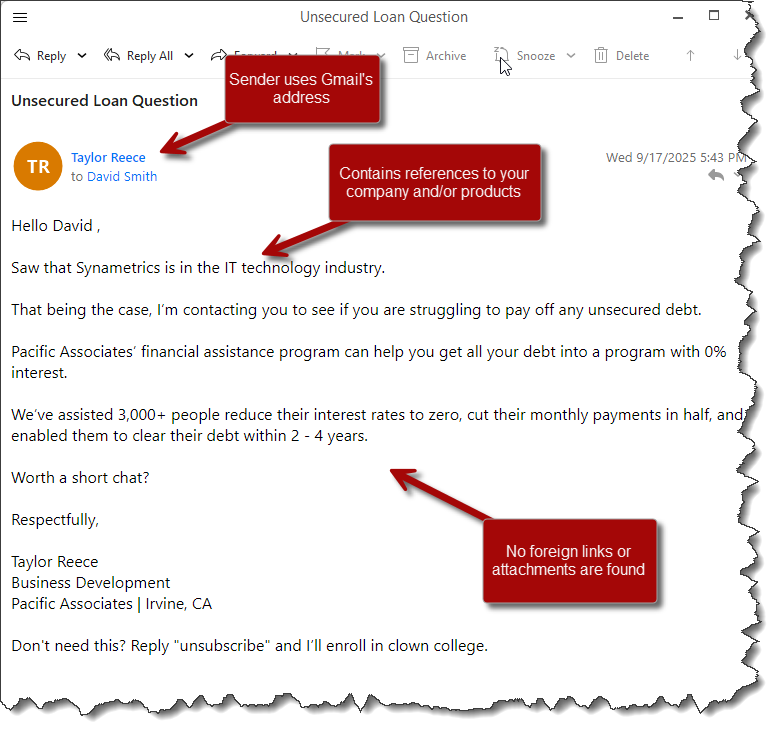AI-Powered Spam/Junk Filtering
AI-powered email junk filtering provides improved accuracy and adaptability, enabling it to catch sophisticated threats and offer greater security against spam, phishing, and malware. It enhances productivity by reducing manual effort and email clutter. Using artificial intelligence, Xeams continuously evolves by learning from user behavior, attack trends, and cross-tenant intelligence. It detects never-before-seen threats without relying on static rules or signatures, and requires no manual tuning, rule writing, or policy maintenance.
These AI-powered filters work in tandem with traditional junk filtering techniques, making Xeams a powerful shield against email threats, viruses, and junk messages.
How Effective is AI-Powered Spam Filtering
Since 2007, Xeams has been providing a comprehensive solution for protecting organizations from email-borne threats and viruses. Although these rules are very effective for most emails, occasionally, some innocent-looking emails get through the filters. This is where AI comes in. For example, AI-powered filtering is effective when:
- Junk messages are generated from public email services like Gmail, Yahoo, and Hotmail. Since these messages always pass the smell-test (SPF, DKIM, and DMARC), some of these messages get through traditional filters.
- Messages that don't have any foreign links
- Messages that appear to come from a reliable source but are actually sent by malicious senders
Refer to the following image demonstrating an email that originated from a Gmail address, which contains references to your company but is marked as junk by the AI filter in Xeams.

Since this message originated from a Gmail address, it followed all the best practices. Moreover, it did not have any foreign links or attachments that would have raised a flag. However, the AI-powered filter was able to catch this as spam. See image below.

Processing Cost
The traditional rule-based filtering is typically effective in most cases, but does not work well for junk messages dressed in innocent clothing. This is where AI comes in. However, using AI filters is costly due to their high processing requirements. Therefore, Xeams takes several steps to reduce this cost:
- Use AI-powered rules for messages that do not score higher or lower than a pre-configured threshold.
- Use AI-powered processing only for Inbound messages
